© Use of content without authorization is prohibited
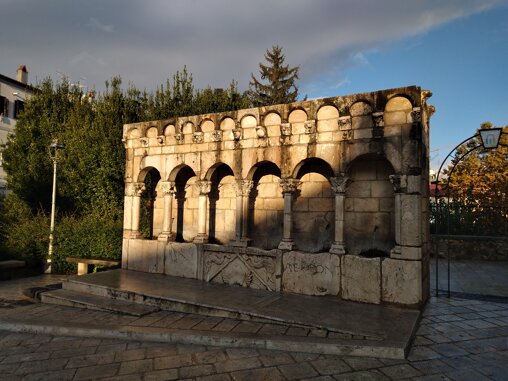
Molise
Campobasso Isernia
A small region, a treasure chest containing unexplored treasures. Starting from the coast, a natural continuation of the fascinating Costa dei Trabocchi. Venturing inland, you travel up and down through semi-inhabited territories dotted here and there with villages where time has stood still. Campobasso and Isernia, the two provincial capitals, are small towns where life flows peacefully. Molise cuisine is varied and pleases meat lovers, fish lovers, and even vegetarians. For cheese lovers, along the roads of Sannio and Matese there are numerous dairies where you can stock up on caciocavallo, provola, and scamorza cheeses. My favorite dishes are Cavatelli allo Scoglio or with Spigatelli, depending on whether I am on the coast or in the inland valleys. The Brodetto di Pesce Termolese with its sauce, ideal for dipping homemade bread. A good wine is Biferno Rosso.
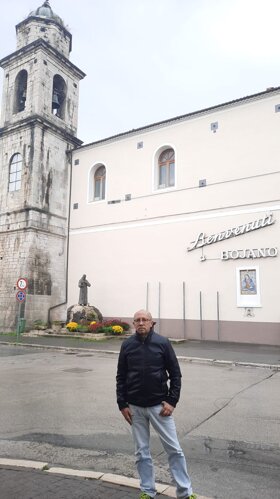
Province of Campobasso
Area: 2926.34 km² Population: 209,207 Municipalities: 84
Bojano: Church of Santa Maria del Parco
Bojano: Church of Santa Maria del Parco
travel stories...
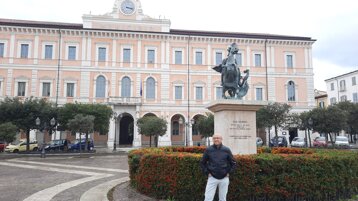
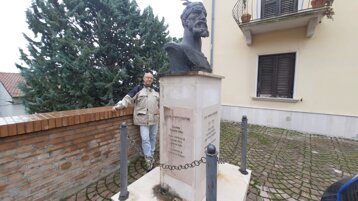

Campobasso
Montecilfone and surroundings
Termoli
I arrived in the regional capital on a drizzly day. I parked right in the city center in front of the Municipal Library. A hundred meters and I am in Piazza Vittorio Emanuele II for a photo in front of the Monument to Saint George, patron of Campobasso. I cross the street and enter the beautiful Palazzo San Giorgio, home to the Town Hall; I walk through the ground floor offices and exit from the back, finding myself immersed in the Gardens of Villa Musenga, also known as Villa dei Cannoni. I continue south and reach the Alessandro di Lisio Garden where, in addition to the Monument to the Fallen, there is an area commemorating the Paratrooper of the Folgore killed in Afghanistan. I get back in the car to reach the hill where Castello Monforte stands, a quadrangular fortress with a tower that today houses a Meteorological Station; I only visit it from the outside but that's enough to perceive its grandeur; from up here you can overlook the whole city. One last stop in an elegant downtown bar for a ginseng coffee, accompanied by the classic glass of water, and then off for new explorations.
Along the ups and downs of the road that leads from Termoli to Campobasso, it's pleasant to drive; few cars and for miles, around me only the slopes of the hills with the colors of autumn. On the roadside I see a little dog abandoned in the rain. I stop the car; the puppy sits there, dejected and skinny, waiting for help. I approach but he, frightened, moves away; so I put everything edible I have on the ground: crackers, brioches, and biscuits, and good luck my friend... I slowly climb up the interior of this region and after half an hour I enter the town of Montecifone. The entrance to the village is uphill as always in these parts. I park the car to walk through alleys with ancient cobblestones up to a small square where there is a monument to the Albanian leader Giorgio Castriota Skanderbeg, whose bronze bust is the pride of the local community. A brief visit to the Church of San Giorgio of the ancient Greek-Byzantine rite, and it's already time to leave this beautiful village of the Lower Biferno surrounded by olive groves and the oaks of the Corundoli Woods.
Arriving in the late afternoon of mid-November after eight hours of driving, I reach the hotel I booked a hundred meters from the large sandy beach of the Costa dei Trabocchi. Fish dinner with cavatelli allo scoglio and then a little exploratory stroll; it's Sunday, and in the evening the main street of this town is bustling with people going back and forth along the open shops. I walk along Corso Nazionale which ends in front of the Swabian Castle, a fortress built in Norman times but renovated as we see it today by Frederick II of Swabia; after passing the high walls of the old town, I wander through the narrow streets of the historic center until I reach the Cathedral of Santa Maria della Purificazione. The next day, in the daylight, I visit the old part of the city starting from the Torre del Belvedere and passing through Rejecelle, the narrowest alley in Italy (just over 30 centimeters). On the last evening, I walk among the illuminated alleys surrounding the port from where ferries depart for the Tremiti Islands, and I breathe in the scent of the sea.

Province of Isernia
Area: 1533.46 km² Population: 78,759 Municipalities: 51
Isernia: Fraterna Fountain
Isernia: Fraterna Fountain
travel stories...

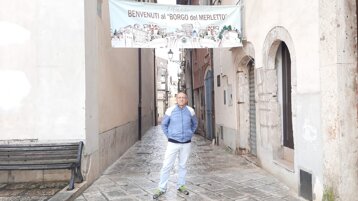
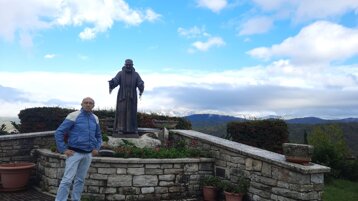
Agnone
Isernia
Pettoranello del Molise
Wandering up and down the Matese, I came across this ancient village, now twinned with the American city of Princeton where many emigrants from here live. At the entrance to the town there is a large statue of Saint Pio of Pietrelcina. It is best to leave your car and slowly walk up the porphyry road to admire the Sannio valley from above; after a few minutes I arrived at the main square, the center of town life, at the top of which stands the Church of Santa Maria Assunta in Cielo, a large 19th-century religious building with a neoclassical façade. I continue further up to the beautiful Baronial Palace, an ancient medieval fortress, renovated over time and now a private residence. I then begin to descend the narrow alleys, observed by the faces of these descendants of the Samnites, and I breathe in the atmosphere of tranquility that reigns here. If you have time and strong legs, you could also visit the mysterious Castello delle Riporse, now little more than a ruin located in a pleasant area several kilometers away; but that is another story.
In the surroundings of this village there are several dairies that sell their products retail; I stopped at one of them and came out with caciocavallo, scamorza, and provolone. This village, famous worldwide for its bell production, is full of churches, each more beautiful than the last. My favorite is the Mother Church of San Marco Evangelista with the unique feature of the bell tower in front of the façade. Also interesting is the Romanesque Church of Sant’Antonio Abate with a magnificent 18th-century altar. The best thing to do is wander through the alleys of the historic center and admire the magnificent friezes on the doorways of the houses. Also worth mentioning is the Marinelli Bell Museum, an ancient foundry dating back a millennium, which, thanks to Pope Pius XI, has also borne the Papal Coat of Arms since 1924. Evening falls and I reluctantly leave this corner of upper Molise to return to the coast; above me, a romantic starry sky illuminates the entire Verrino Valley.
Coming from the Venafrana state road, I enter Isernia in Contrada Santo Spirito, and in the middle of the roundabout, I can't help but notice the monument to the Prehistoric Elephant; one of the symbols of the so-called City of the Paleolithic. A sleepy provincial town with all the advantages that entails; starting with easily finding free parking close to the historic center. Skirting the ancient walls, I arrive in a few minutes at Piazza Celestino V, the heart of the nightlife. On one side I notice a large antique iron gazebo, with some mosaics on the sides, which serves as a Music Stage. On the opposite side is the most beautiful monument in Isernia: the stunning Fontana Fraterna, made up of arches and limestone columns, decorated marbles, and six spouts to quench your thirst on summer days. To the left of the fountain are the Church of the Conception and the adjacent Civic Museum of the Memory of History; to the right, a bit hidden by vegetation, is the statue of Pope Pietro Celestino V. I continue along the pleasant historic center, first visiting the “Borgo del Merletto”; then passing in front of the Church of Santa Chiara, and finally, after visiting the Cathedral with its beautiful neoclassical façade, I end this relaxing visit in front of Palazzo San Francesco, built in the 13th century as a convent and today the town hall.